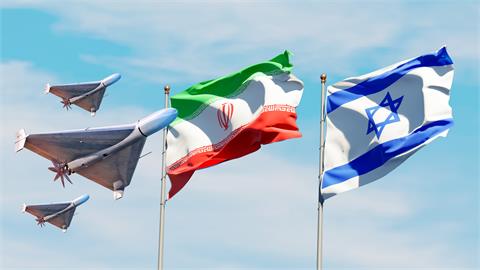On June 13, 2025, the Iran-Israel war began, when Israel launched a surprise attack targeting key military and nuclear facilities, cutting short negotiations between Iran and the US over Iran’s nuclear ambitions and the easing of economic sanctions. The opening hours of the war saw a series of targeted assassinations of Iran’s top military leadership and nuclear scientists, airstrikes on nuclear and military facilities, and destruction of Iran’s air defenses. Iran retaliated by launching a salvo of missiles at military sites and cities in Israel.
On June 13, 2025, the Iran-Israel war began, when Israel launched a surprise attack targeting key military and nuclear facilities, cutting short negotiations between Iran and the US over Iran’s nuclear ambitions and the easing of economic sanctions. The opening hours of the war saw a series of targeted assassinations of Iran’s top military leadership and nuclear scientists, airstrikes on nuclear and military facilities, and destruction of Iran’s air defenses. Iran retaliated by launching a salvo of missiles at military sites and cities in Israel.
The conflict is the culmination of decades-long escalating animosity between the two countries, during which Iran challenged Israel’s legitimacy and called for its destruction, while Israel considered the Iranian nuclear program an existential threat. During the crisis in the Middle East that followed the Hamas attacks of October 7, 2023, and the ensuing Gaza war, animosity escalated to direct confrontation. Israel weakened Iranian proxies, such as Hamas and Hezbollah and began planning action against Iran. A day before the Israeli strikes occurred, the International Atomic Energy Agency (IAEA) found Iran non-compliant with its nuclear obligations for the first time in 20 years.
In the growing conflict between Israel and Iran, many questions now loom, as analysed in the latest News Analysis, which is available here, including the extent of US involvement, following the bombing on June 22 of Iran’s three main nuclear sites (Fordow, Natanz and Isfahan) with high calibre Massive Ordinance Penetrator (MOP) bunker buster bombs, with the aim to solely destroy its nuclear program, prevent a nuclear war and also a wider war, paving the way for regime change in Tehran.
Following a hastily mediated truce by the US on June 24, a fragile peace has taken hold between the waring nations. How long this peace will hold is highly depending on Iran’s willingness to pursue its nuclear program, despite the present setback, and Israel’s ability to exercise restrain from further military action. All this uncertainty and speculation is having some impact on energy markets and potentially much more in the weeks to come.
While there have been some attacks on energy infrastructure, there has not been any serious disruption in oil or gas supply to the global market, following strategic decisions by both countries to avoid destruction of corresponding energy infrastructure. Some energy traders are seemingly anticipating that the conflict will remain contained in the months to come, but this is far from certain.




